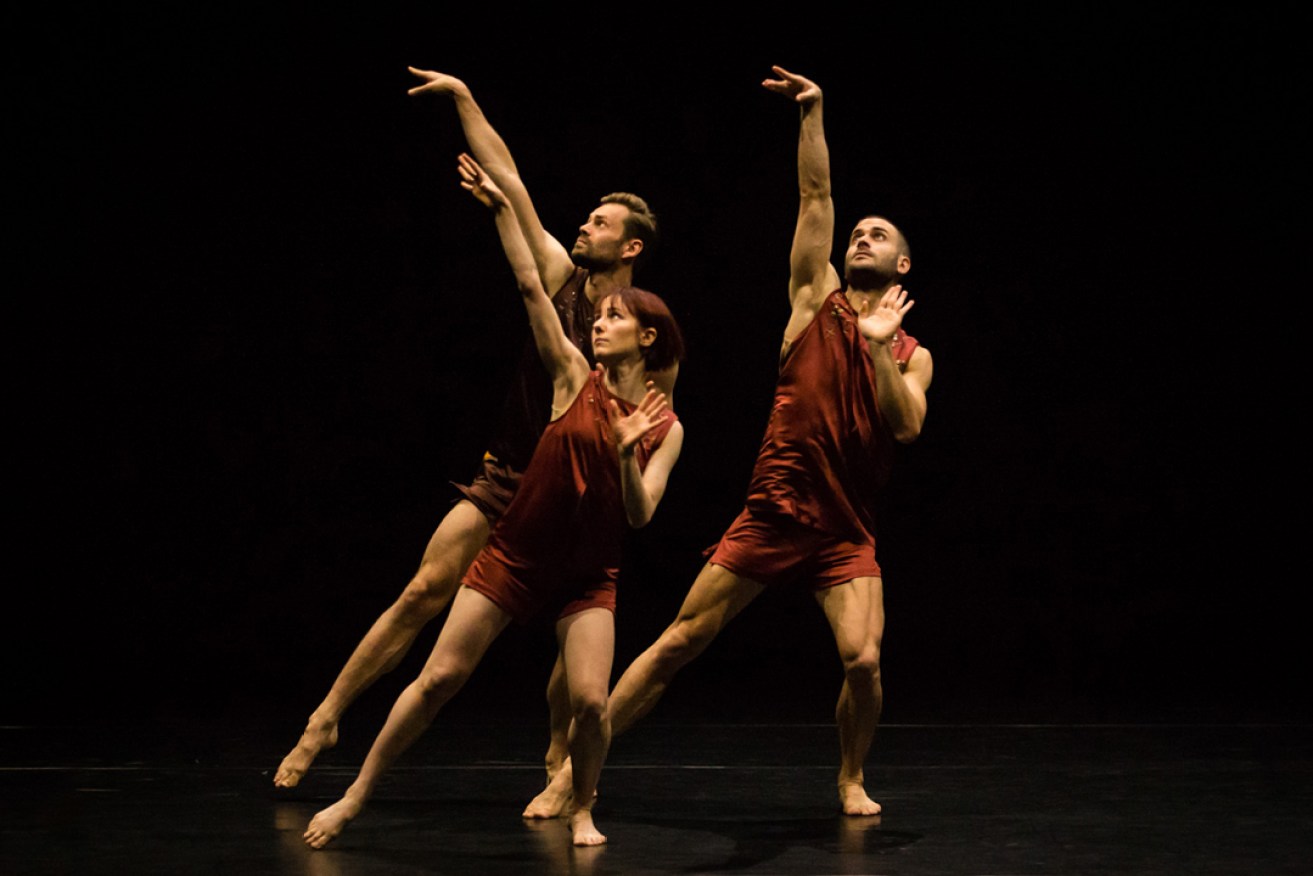Exposing the Wildebeest within
Adelaide choreographer Gabrielle Nankivell’s Wildebeest is a dramatic dance work born of her fascination with animal instincts, the forces of nature and mechanics.

Sydney Dance Company performs Wildebeest. Photo: Pedro Greig
Premiering in Adelaide this week as part of the Sydney Dance Company double bill Frame of Mind, the Helpmann Award-nominated work features a cast of 16 dancers and a “stormy and industrial” score by fellow South Australian Luke Smiles.
Wildebeest was originally created in 2014 for the dance company’s New Breed program, but was reworked last year after being selected as part of its repertoire.
Nankivell tells InDaily that because it was her first collaboration with the company, she sought to showcase the power of its performance – both as an ensemble, and through the unique personality and movement style of each member.
“I wanted to create something looking at the idea of how do a group of bodies work en masse and how does an individual emerge from that and how the individual can be overtaken again.”
The choreography also explores and exposes the wildebeest within.
Nankivell says the work does not attempt to imitate animals, but rather to look at the role of instinct and how both humans and animals relate to forces of nature such as an approaching storm.
To explain, she recounts her experience of a small earthquake felt at her Adelaide Hills home a few years ago.
“I was just sitting in the lounge room in front of the fire reading a book and the dogs were with me and suddenly they went really strange – they stood up, got really tense and started kind of growling … then you felt and heard and saw this little tremor and it went from one side of the room to the other.
“So there’s something about the way we connect to nature which we often forget is just purely instinctual because we’re distracted by other things, whereas for animals the instinct is the strongest thing.
“You notice it particularly in herd mentality or with animals in the wild … I wanted to look at if humans try to connect to these animal instincts, how does that affect the body?”
While the solos in Wildebeest mostly relate to this exploration of animal instincts, some of the ensemble work reflects a second, intertwined theme: the evolution of machines, and how humans interact with them. The dancers create patterns with their bodies and perform rapid, synchronised movements like mechanical cogs.
“I like looking at the evolution of an animal or a natural beast, but I also like looking at the evolution of a mechanical beast – something that is also connected with power, either manpower or through energy or electricity or computers,” Nankivell says.
“So I wanted to trace a bit of a timeline across the development of machinery. We start out with things that are very simple and very one-to-one, then gradually build this thing that is much more intricate, much more interlinked.”
Nankivell and Smiles are long-time collaborators – their most recent work, the smaller-scale Split Second Heroes, premiered at the Adelaide Festival Centre’s Space Theatre last month – and his soundtrack is integral to the mood and feel of Wildebeest.
Nankivell says their working process is closely intertwined; sometimes the music or sounds Smiles create influence her choreography, while at other times the movements inspire the score.
“For something like looking at the evolution of machinery, the sound could go from very tick tocky all the way through to something that sounds really electrical and digital and like it’s made in a computer.”
One reviewer described the Wildebeest score as “an amazing soundscape of stormy weather, soaring song and grinding noise”.
Nankivell says her childhood growing up on a farm in the Adelaide Hills – “running around pre-internet age, doing all the things that we used to spend our time doing as kids, like going on adventures, making rafts and forts” – has had an indelible influence on all her work.
“I think it’s just that approach; my approach to how I live and how I work are very similar. So yes, it’s a very defining thing but not just for this work. I think it’s probably defining for a lot of things I make.”
She has danced with many prominent companies (including Australian Dance Theatre and Chunky Move), and has performed on the stage at Her Majesty’s Theatre a number of times. However, Wildebeest will be the first time she has had the opportunity to sit in the audience with her family and watch one of her own creations.
The second piece in the double bill, Sydney Dance Company artistic director Rafael Bonachela’s Frame of Mind, features the same dancers in a work performed to a contemporary-classical soundtrack by Bryce Dessner (of American rock band The National) and recorded by San Francisco’s Kronos Quartet.
“It’s a very, very powerful piece and it’s totally different, so it’s a really great program because audiences get to see the company in two very different lights,” Nankivell says.
Frame of Mind will be presented at Her Majesty’s Theatre on August 17, 18 and 19.




